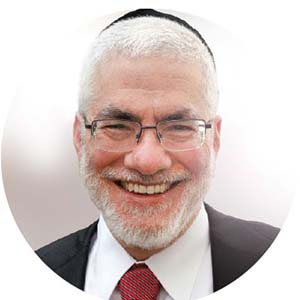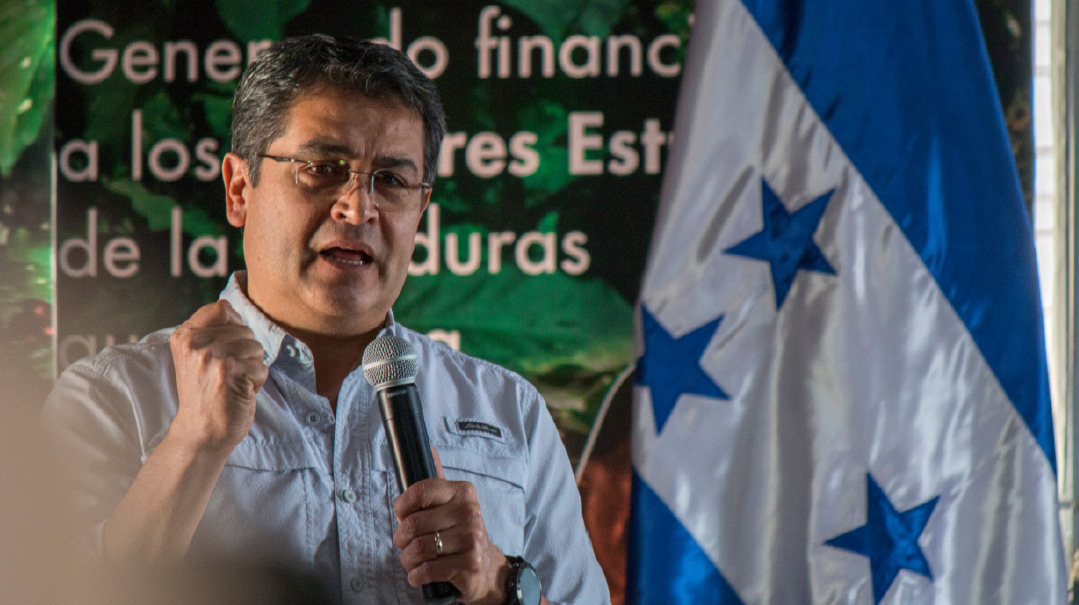Hearing His Voice

Why Torah Judaism continues to attract new adherents, even as the heterodox movements hemorrhage members
T
he June 25 National Review contains a review of Why Religion Went Obsolete: The Demise of Traditional Faith in America by Christian Smith. In an early work, Smith characterized much of contemporary Christianity as “moralistic, therapeutic deism,” from which, in the words of reviewer Paul Bauman, all the demanding doctrines of religious faith — sin and evil, judgment, redemption, and an afterlife — have been removed, “in favor of a distant and undemanding G-d whose moral edicts are tailored to the essentially benign aspirations of his creatures.”
“Most Americans see making people good as religion’s primary purpose,” according to Smith, but “religion holds no ‘patent’ on its most important “product.’ ” As a consequence, most Americans view religion as nonessential. Terms like eternal, heaven, soul, and judgment seldom appear, even in the religious press. In the mainstream churches, the emphasis is on social justice, while little attention is paid to codes of individual behavior.
Smith is describing American Christianity, but his description would apply equally to the heterodox Jewish movements, perhaps even more so.
That description strikes me as largely accurate — again, including Jewish heterodoxy — though I would quibble a bit with the assertion that traditional religion is not more likely to produce “good” people. True, most of us know many nonreligious people who are honest, faithful, and giving, but one would think that belief in an all-seeing G-d, Who judges every action of His creatures, with eternal consequences, makes it easier to overcome one’s yetzer hara and to become such a person.
THE REVIEW of Smith’s book did set me thinking about how much is lacking in the pale, deistic religion offered by liberal Christianity and Jewish heterodoxy. First and foremost, a personal relationship with the Creator and Master of the Universe, to Whom one can speak, even confide, at least three times daily. Prayer provides an opportunity to express gratitude for all life’s blessings and to find succor in times of travail. A personal G-d is a source of hope when things are darkest and provides us the ability to recognize that our human perspective is never more than part of the story when tragic events strike.
In this vein, I think of recently released hostage Sasha Troufanov, who described how, despite having always viewed himself as an atheist, he came to belief in G-d while in captivity, and who powerfully expressed his gratitude for having gained the ability to pray as a consequence. His first request upon his release was for a pair of tefillin.
Further, Torah Judaism and other forms of traditional religion offer us a sense of transcendence, of being part of something much larger than ourselves, in which we nevertheless have an individual role to play. With transcendence goes holiness, expressed as awareness of being possessors of a divine soul, which it is our task to perfect on a path to becoming ever more G-d-like.
A Torah Jew learns early on to “work on” him- or herself, for there is no easy assumption of the human person as being fully formed. Just the opposite, as Yuval Levin puts it in an important essay, “The Case for Hard Pews: Why Hard Religion is More Important Than Ever.”
And finally, traditional religion provides us with an easily accessible community of like-minded believers. And that is particularly true of Torah Judaism, which sees redemption as a communal process, and not just an individual matter. The Jewish calendar ensures that we will at any given moment be engaged in common activities with our friends and neighbors.
Levin opines that hard religion performs its highest civic function by modeling “the kind of communal life shared by those with common religious convictions,” an example that offers an alternative to our endless cultural wars.
Not surprisingly, all these aspects of Torah Judaism, with its rigorous demands on both the individual and the community, perfectly track the meaningful life, as described by Emily Esfahani Smith in The Power of Meaning: Finding Fulfillment in a World Obsessed with Happiness. And they explain why Torah Judaism continues to attract new adherents, even as the heterodox movements hemorrhage members. A Pew Research study from more than a decade ago discovered 110,000 American Jews identifying as Orthodox who were not raised in Orthodox homes.
These gifts of Torah begin with that singular event at Sinai, which we will soon celebrate, when “we heard His voice from the midst of the fire; this day, we saw that Hashem will speak to a person and he can live” (Devarim 5:21).
Chag sameaich.
Fanning the Flames
I’m back home after a couple of weeks in the States on a speaking tour. One of my recurring subjects was the lessons learned since the Simchas Torah massacre.
Chief among those lessons was that Hashem continues to protect us in miraculous ways. We now know that Hezbollah had huge underground bases on Israel’s northern border. Had they attacked together with Hamas on October 7, Israel would have found itself fighting on two fronts deep inside Israeli territory. The pitifully slow response of the IDF to Hamas’s breach would have been compounded many times by a far larger and better trained and armed Hezbollah force.
At the outset of the war, newspaper headlines predicted the daily desolation of 3,000 rockets and missiles from Lebanon and hundreds of casualties. But that never happened because of the spy-thriller-style simultaneous explosion of 3,000 pagers in the pockets of senior Hezbollah operatives, followed the next day by exploding walkie-talkies, which forced the senior Hezbollah leadership, including Hassan Nasrallah, to meet in person, at which location they were eliminated by the Israeli Air Force.
Then there were the 300 intercontinental missiles launched by Iran, without a single Israeli casualty, and the fall of the Assad government, without a single shot fired by Israel.
The second lesson is that the pintele Yid continues to burn among the Jews of Israel and is capable of being fanned into a bright flame. One prominent example is the more than 9,000 soldiers who have requested tefillin and committed to donning them every day and the many times that number who requested tzitzis before going into battle.
My wife and I were blessed to participate in the first shabbaton of hostage family members and also the first shabbaton of Nova Festival survivors sponsored by Kesher Yehudi. In all, 200 hostage family members participated in a series of shabbatonim and tefillah gatherings, and 500 Nova survivors in a second set. One-third of those participants now have regular chavrutot, and 26 have become fully shomer Shabbat.
Most remarkable has been observing how the changes taken on by hostage families took place in parallel to those of their loved ones in captivity, without any communication between them. Both the mother, Yelena, and the grandmother of Sasha Troufanov, mentioned above, became fully observant prior to his release.
Agam Berger, whose story captivated the entire nation, earned the respect of her captors for her refusal to cook or clean for them on Shabbat. She also refused all meat offered her and any chometz on Pesach, and fasted on Yom Kippur, along with four other women soldiers taken hostage along with her. She had no way of knowing that her parents and siblings had become shomer Shabbat and created a beit knesset in their building (see “Agam Is Home,” Issue 1048). Omer Shem-Tov used a few drops of grape juice from a bottle to make Kiddush every Leil Shabbos. He did not know that his mother, Shelley Shem-Tov, had taken on Shabbos observance at the first shabbaton for hostage families.
When Romi Gonen embraced her mother after her release, her first words were not of her suffering, but a declaration: “I’m Jewish. In captivity, I truly felt that I was Jewish. And being Jewish means keeping Shabbat. So, from now on, I will keep Shabbat.”
She was surprised to learn that her mother had been learning regularly with Rabbanit Yaffa Deri.
Another data point: In a survey of traditional and secular parents conducted by Direct Polls, a leading research firm, a full 70 percent of the parents said they felt a need to strengthen their children’s Jewish identity in the wake of October 7. Forty-four percent sought a curriculum with Jewish studies included, and 26 percent were interested in an equal division between religious and secular studies.
That finding is consistent with a dramatic leap in enrollment in Shuvu schools over the past year and a half. Originally inspired by the late rosh yeshivah of Torah Vodaath, Rav Avrohom Pam ztz”l, in the early 1990s, in response to the large influx of Russian-speaking families to Israel, Shuvu schools have long since opened their doors to veteran Israeli families.
The Shuvu schools offer high-level secular studies, which have won many awards from the Ministry of Education, together with Jewish studies taught by Bais Yaakov and yeshivah graduates. The Direct Poll research determined that many other features of Shuvu schools — e.g., a longer school day, school uniforms, frequent teacher-parent contact, and zero tolerance for violence — are also of great interest to parents. Unfortunately, despite the leap in Shuvu enrollment, only around a quarter of parents are as of yet familiar with the Shuvu system.
Just one more example of how much can and must be done to fan the flames of Torah in Eretz Yisrael. And how much potential there is to do so.
(Originally featured in Mishpacha, Issue 1063. Yonoson Rosenblum may be contacted directly at rosenblum@mishpacha.com)
Oops! We could not locate your form.







